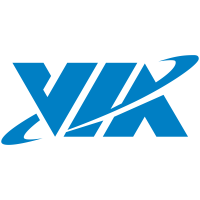ATI Mobility Radeon HD 2600 vs ATI Radeon X800 GTO AGP
Comparative analysis of ATI Mobility Radeon HD 2600 and ATI Radeon X800 GTO AGP videocards for all known characteristics in the following categories: Essentials, Technical info, Video outputs and ports, Compatibility, dimensions and requirements, API support, Memory, Technologies. Benchmark videocards performance analysis: PassMark - G3D Mark, PassMark - G2D Mark, GFXBench 4.0 - T-Rex (Frames), GFXBench 4.0 - T-Rex (Fps).
Differences
Reasons to consider the ATI Mobility Radeon HD 2600
- Videocard is newer: launch date 1 year(s) 7 month(s) later
- Around 25% higher core clock speed: 500 MHz vs 400 MHz
- A newer manufacturing process allows for a more powerful, yet cooler running videocard: 65 nm vs 110 nm
- Around 46% better performance in PassMark - G3D Mark: 168 vs 115
- Around 65% better performance in PassMark - G2D Mark: 267 vs 162
| Specifications (specs) | |
| Launch date | 14 May 2007 vs 1 October 2005 |
| Core clock speed | 500 MHz vs 400 MHz |
| Manufacturing process technology | 65 nm vs 110 nm |
| Benchmarks | |
| PassMark - G3D Mark | 168 vs 115 |
| PassMark - G2D Mark | 267 vs 162 |
Reasons to consider the ATI Radeon X800 GTO AGP
- Around 20% higher texture fill rate: 4.8 GTexel / s vs 4 GTexel / s
- Around 23% higher memory clock speed: 980 MHz vs 800 MHz
| Texture fill rate | 4.8 GTexel / s vs 4 GTexel / s |
| Memory clock speed | 980 MHz vs 800 MHz |
Compare benchmarks
GPU 1: ATI Mobility Radeon HD 2600
GPU 2: ATI Radeon X800 GTO AGP
| PassMark - G3D Mark |
|
|
||||
| PassMark - G2D Mark |
|
|
| Name | ATI Mobility Radeon HD 2600 | ATI Radeon X800 GTO AGP |
|---|---|---|
| PassMark - G3D Mark | 168 | 115 |
| PassMark - G2D Mark | 267 | 162 |
| GFXBench 4.0 - T-Rex (Frames) | 1690 | |
| GFXBench 4.0 - T-Rex (Fps) | 1690 |
Compare specifications (specs)
| ATI Mobility Radeon HD 2600 | ATI Radeon X800 GTO AGP | |
|---|---|---|
Essentials |
||
| Architecture | TeraScale | R400 |
| Code name | M76 | R430 |
| Launch date | 14 May 2007 | 1 October 2005 |
| Place in performance rating | 1026 | 1028 |
| Type | Laptop | Desktop |
Technical info |
||
| Core clock speed | 500 MHz | 400 MHz |
| Floating-point performance | 120 gflops | |
| Manufacturing process technology | 65 nm | 110 nm |
| Pipelines | 120 | |
| Texture fill rate | 4 GTexel / s | 4.8 GTexel / s |
| Transistor count | 390 million | 160 million |
| Thermal Design Power (TDP) | 49 Watt | |
Video outputs and ports |
||
| Display Connectors | No outputs | 1x DVI, 1x VGA, 1x S-Video |
Compatibility, dimensions and requirements |
||
| Interface | MXM-II | AGP 8x |
| Laptop size | medium sized | |
| Supplementary power connectors | 1x Molex | |
API support |
||
| DirectX | 10.0 | 9.0b |
| OpenGL | 3.3 | 2.0 |
Memory |
||
| Maximum RAM amount | 256 MB | 256 MB |
| Memory bandwidth | 12.8 GB / s | 31.36 GB / s |
| Memory bus width | 128 Bit | 256 Bit |
| Memory clock speed | 800 MHz | 980 MHz |
| Memory type | DDR2, GDDR3 | GDDR3 |
| Shared memory | 0 | |
Technologies |
||
| PowerPlay 7.0 | ||










